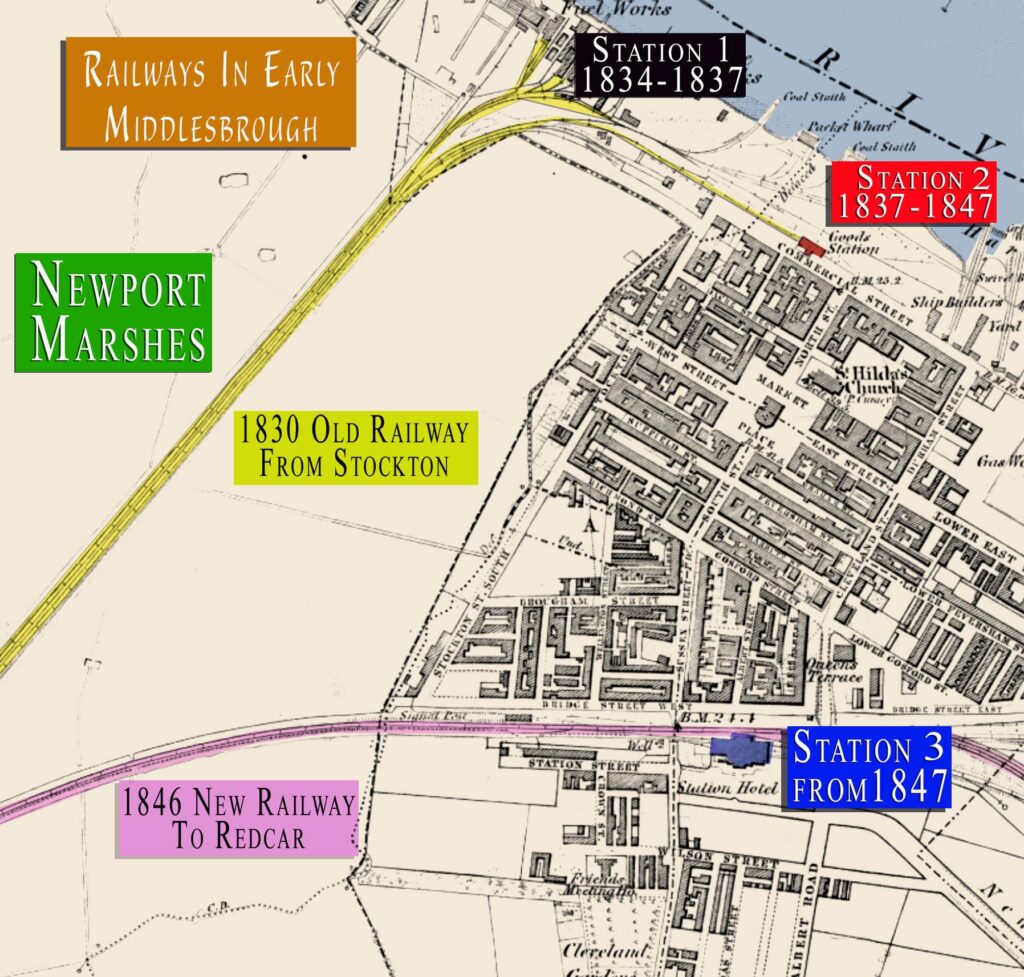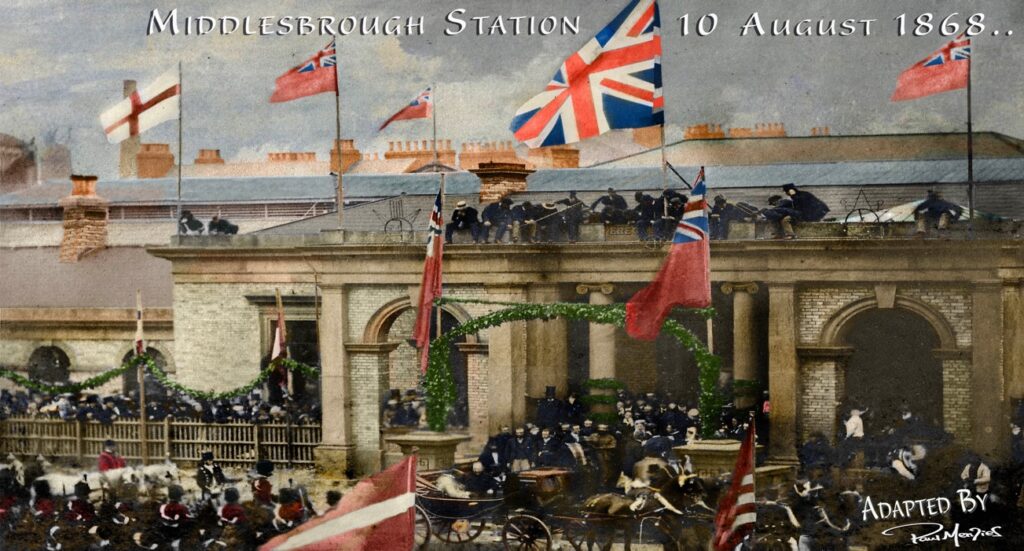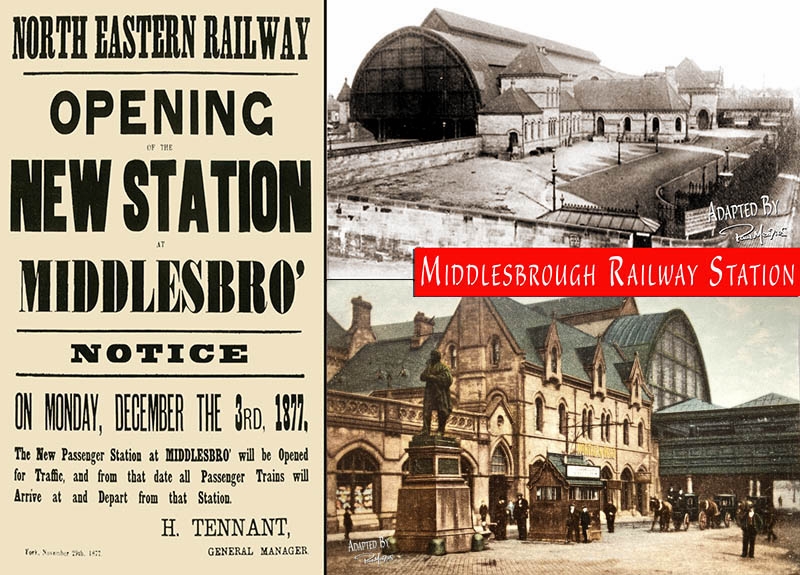
The Coming of the Railway to Middlesbrough
Railways were very much a key part of the birth of Middlesbrough and it’s quite possible that the industrial town may have remained an isolated farmhouse for some years if the Stockton and Darlington Railway Company had not extended the railway along the southern banks of the Tees from Stockton to Middlesbrough in 1830.
Eighteen months before Joseph Pease and business partners bought the 500-acre (202 hectares) site. The Stockton and Darlington Railway Company because of the navigation issues along the Tees between Newport and Stockton, had petitioned Parliament to extend their line to Middlesbrough, where coal shipping staithes would be built to facilitate the export of coal. It would never have occurred to the business consortium that the railway would be anything other than a transport medium for the conveying of goods traffic thus facilities for carrying passengers in the early days were very few indeed.
In the early years when there was no direct road, a coach drawn by a horse along the railway and driven by coachman Jim Brown linked Middlesbrough to Stockton. It is recorded that Jim would walk along Stockton Street blowing his horn when departure time approached, any passenger who looked as if they were going to travel would be encouraged to board the coach. Often the journey to Stockton would be made behind a fleet of empty coal wagons whilst it wasn’t unknown for passengers simply to walk along the railway line on foot!
In 1834 the Railway Company announced that horses would largely be replaced by locomotives with a wooden hut close to Watson’s Wharf (later Dent’s Wharf) becoming the first railway station in the town. As passenger numbers grew the shed was removed and a new site found. The second railway station was located opposite the Custom House building and was used for 10 years.
Why did William Taylor organise a petition?
In 1847, a year after the new railway to Redcar was completed it was decided to move the station for a third time to a new location south of the town at a site close to Sussex St. There was great amazement amongst the people living in Middlesbrough that anyone could consider placing the new station so far away. Led by local businessman William Taylor, inhabitants signed a petition to the railway company asking them not to place the new station out of town where it would be most inconvenient for businesses. At that time only fields and farmhouses such as Dairy Knoll and The Grange, lay beyond the railway line. There was also a feeling that the new station was too large a concern for a small place like Middlesbrough.

10 August 1868; Prince Albert’s carriage leaves Middlesbrough Station for Marton Hall
Not another railway station!

3 December 1877; the fourth and still remaining railway station opens in Middlesbrough
When Middlesbrough experienced increasing economic growth after 1850 through the iron and steel industry it soon became necessary to consider a new railway station for Middlesbrough – one that would reflect the growing status of the town.
The third station to be built in the town (and the one which still remains today) opened in 1877 on the site of the 1847 building and this time there were no protests as this magnificent new building took its place in the business centre of the town. With its long arch and glass roof and imposing entrance it was indeed a great improvement on the wind-swept location of wooden hut which was Middlesbrough’s first railway station.
Today it still serves passengers travelling by rail to destinations within the region as well as further afield.
Paul Menzies